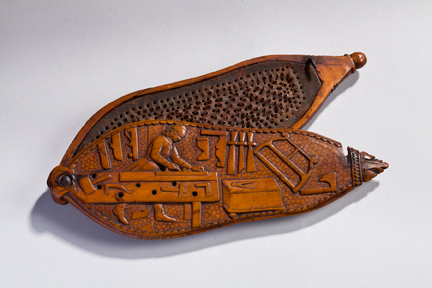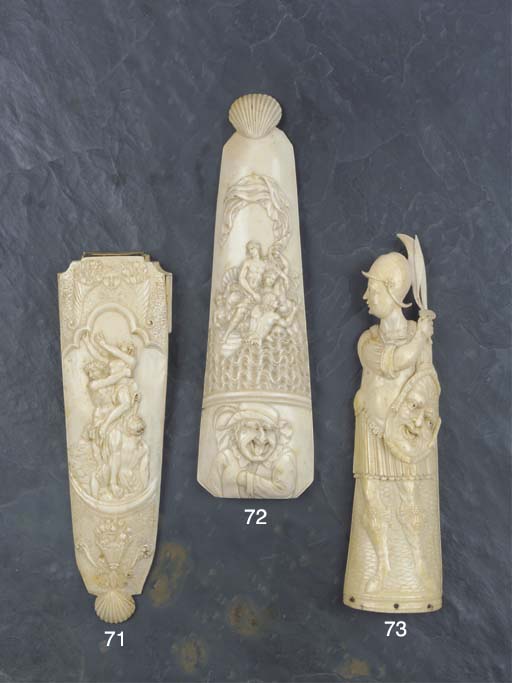Boxwood and iron, 1675-1725, French, Carnegie Museum of Art
Part of the fun of going to a museum is wondering what you are going to learn about that is totally unexpected and utterly fascinating. There is always something that stops one in one’s tracks. In London, I had huge fun recently learning about the most unusual and esoteric of objects in today’s context. How often does one use a tobacco grater today!
Tobacco had first been brought to Europe by Christopher Columbus and his men from Cuba, and by 1528, Europeans in general were being introduced to it, with an emphasis on all its medicinal advantages. The thriving trade helped foster colonization and was also an important factor in the slave trade with Africa. Sir Walter Raleigh supposedly brought the Virginia strain of tobacco to England in 1578 and again, its healthful aspects were emphasized. Virginia became a very important source of tobacco, with its cultivation spreading to the Carolinas. Tonnage imported to England steadily increased, and by 1620, 54,000 kg. were produced in Jamestown, Virginia, alone.
Tobacco was not only smoked, but also inhaled as a smokeless powder. On Columbus’ second voyage to the Caribbean, snuff-taking was observed among the Taino and Carib Indians and the Spanish promptly introduced snuff to Europe, with Seville being the first manufacturing center for it. In the United Kingdom, Bristol and Glasgow also became centers for processing and flavouring snuff. Progressively, Europe embraced snuff-taking, and despite opposition to it, and to tobacco in general, snuff became the tobacco product of choice amongst the elite by the 17th and 18th centuries.
Not only were snuff boxes an important accessory to snuff-taking around the world, but they quickly became luxury items, with air-tightness being very important as otherwise snuff dries out. This characteristic led to other ways of preparing snuff.
This is where my discovery at London’s Wallace Collection comes in. The tobacco grater, a close relation of the nutmeg grater, is the tool that was used to rasp a roll of tobacco (called a “carotte”) to produce powdered tobacco or snuff. Beneath a slightly convex long outer covers were affixed metal fittings which rubbed against the tobacco. The outer cover is where luxury and social standing are displayed. Ivory, beautifully carved, pearwood or other such materials were used, often with classical subjects.
Sometimes, too, the owner's profession or personal tastes were the theme, while others had religious scenes (especially for the clergy). Monograms and coats of arms were also sometimes carved on the graters, according to their owner's status.
Many of the tobacco graters or raspers were made in the Dieppe-Morlaix area in France, partly because Dieppe was a major importation area for ivory.
However, interestingly enough, some collectors consider that carved wooden - boxwood or pearwood - graters are more valuable than ivory. Tobacco graters are also made in silver, enamel, copper, steel, tortoiseshell, etc.
However, to my eye, the ivory and pearwood ones I saw at the Wallace Collection were really fascinating. The carving was so delicately done, so elegant and refined.
Considering what I personally think about tobacco, I find it a fraction ironic that I was so enthralled with these graters. Nonetheless, that is what going to a museum is about, to an extent - getting one's optic on life expanded and enriched. It certainly happens a lot to me in museums!







